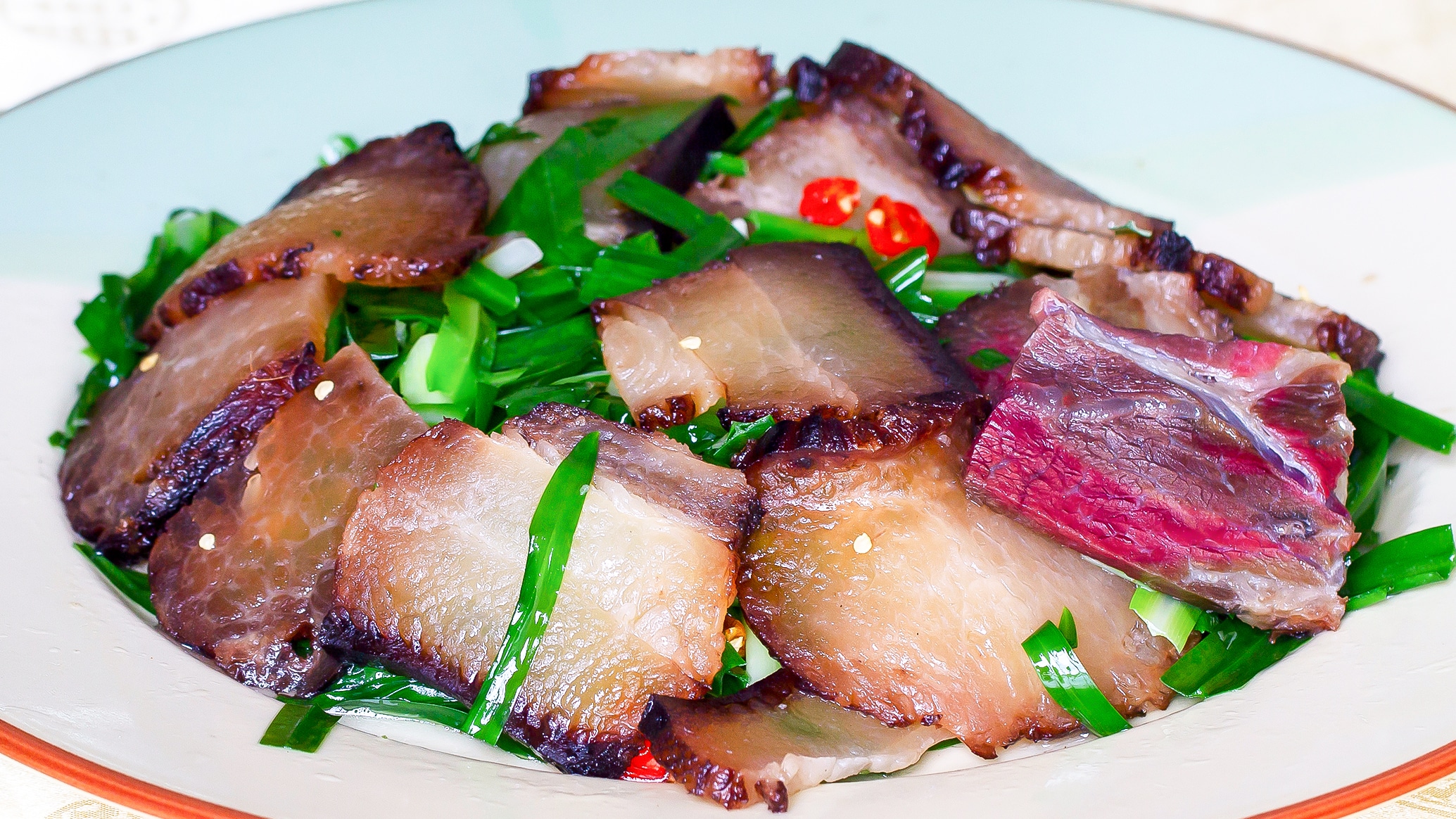Diving into Shaoguan cuisine

Shaoguan has been the crossroads of the Central Plains culture and Lingnan culture, where residents from all corners of the country come so that the food essence of local cuisines are joined together here. Numerous Northern and Southern styles of food, local flavors and folk delicacies give a brilliant taste to Shaoguan cuisine.
Wang Meiling goose
Wang Meiling goose, a special dish of Nanxiong, enjoys a high reputation in the world. A local goose is cooked according to ancestral recipes, tasting fresh, soft and smooth. It is really amazing. It combines the flavor of the Central Plains diet and the Hakka flavor of Lingnan in North Guangdong. The goose is generously cut into big chunks of meat, giving it a bold look. Don’t let this dish catch you off guard, because it is unexpectedly spicy.
Fried dumpling
Evolved from the Central Plains cuisine and similar to the Southern jiaozi, fried dumpling is also representative food of Nanxiong. It is said that the ancestors of the Central Plains who migrated to the south used to grind wheat to make dumplings. During the Tang and Song dynasties, the ancestors came to live in Nanxiong, Zhuji Lane where there is very little wheat in the winter. Instead, they chose flour made of water-milled white rice. The custom of making traditional “package ci” has been circulating up to now.
Boat dwellers made sacrificial offers with fried dumplings to worship the gods when they sailed a boat, praying to the River God for peace.
Yaoshan bacon
Ruyuan Yao Autonomous County, known as “the hometown of the world’s Yao”, is also a place mainly inhabited by Hakka people. It maintains the simplicity and hospitality of the Hakka people and retains the strong Hakka customs. It maintains the original Hakka cuisine as well.
Pork that has been smoked for over a year and a half is a regular product, the top product has been smoked for three years. There is even pork smoked for ten years, which is a treasure. The hanging order of the pork is quite an art. The most recent pork is hung on the bottom, last year’s pork is on the second layer and the pork from the year before that is hung on the third layer and so on. The higher it hangs, the older the bacon.
Datang steamed pork
Fresh, fat, medium streaky pork is needed to make Datang steamed pork. Season and stir-fry the pork until the color turns yellow, then add the fried taro to the meat and place the pork skin neatly in a large bowl. After steaming for about 90 minutes, then remove the bowl and move the pork to a plate. That is how you cook this star dish.
Qinghua vermicelli
Produced in the scenic town of Aizi, Qinghua vermicelli is also known as “prime minister’s vermicelli” or “Aizi vermicelli “, while locals prefer to call it vermicelli. It is a traditional product with a history of over 1300 years. It is said that Qinghua vermicelli was once included in a banquet hosted by Zhang Jiuling, a famous prime minister in the Tang dynasty, when he invited the emperor.
The Qinghua vermicelli keeps the original flavor of rice and is both flexible and refreshing, described as “fried but not tough” and “boiled but not paste”. In the countryside, when folks invite guests to dinner for a one-month-old baby or for a wedding ceremony, Qinghua vermicelli will be used to entertain guests. It is also the first choice for locals craving a fast food midnight snack.
Hakka Baked Chicken in Salt
Among the diverse and profound Chinese food culture, there is a simple, traditional dish, called Grandma’s Baked Chicken in Salt, also known as Hakka Baked Chicken in Salt. According to legend, this Hakka dish originated from a grandmother’s love for her grandson: since her daughter and grandson couldn’t come home to celebrate the Spring Festival, Grandma kept the chicken she killed during the festival, marinating it with salt until her daughter and grandson came to visit her. When Grandma took the chicken out, the grandchild said it was extremely yummy. News passed quickly from mouth to mouth and Grandma’s Baked Chicken in Salt became a famous Hakka dish.
Fengjiang fish
In Xinfeng County, mountains are high and torrents are swift. The streams are clear and pollution-free, so that the water quality of Fengjiang River is great, with a large amount of freshwater activities. The river fish here has no smell. Many tourists who have eaten the fish praise it as “boutique taste”.
This dish is made in a variety of ways: raw stew, freshly baked, steamed, steamed with black bean juice, braised, hot pot and other methods. Without chicken essence or flavoring, a fish feast can be cooked only with salt and peanut oil, which reflects the fresh, tender, refreshing and smooth characteristics of the delicious dish.







